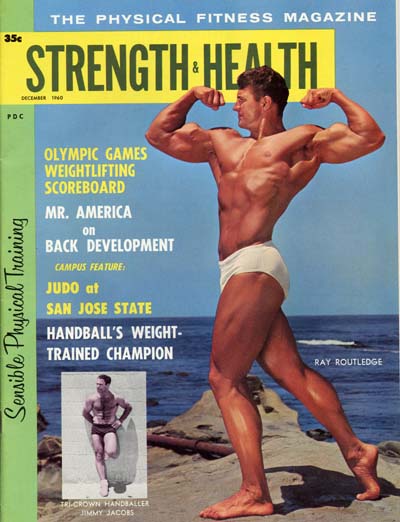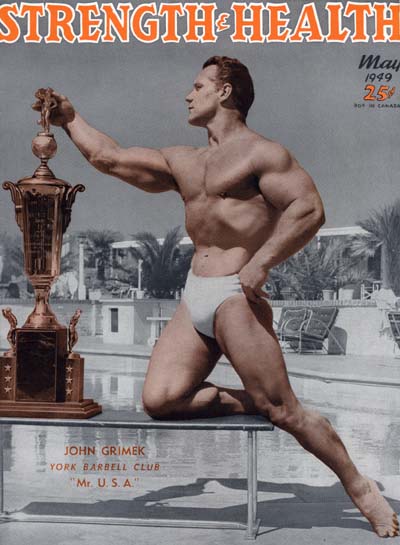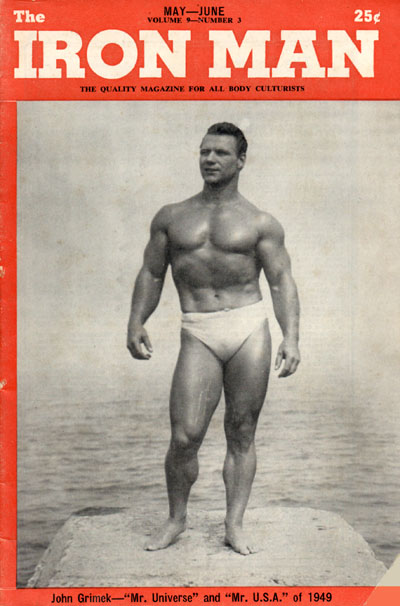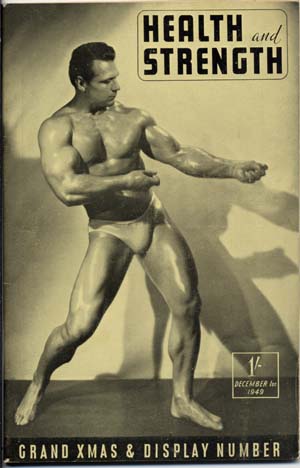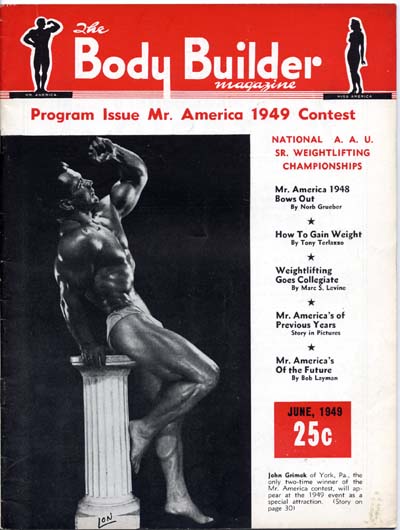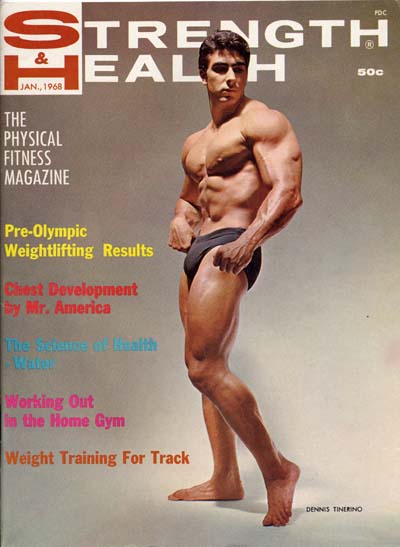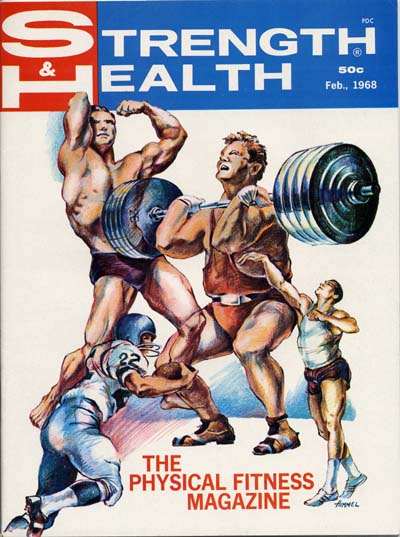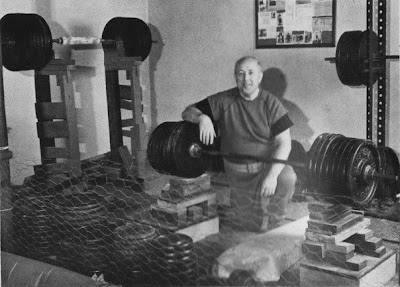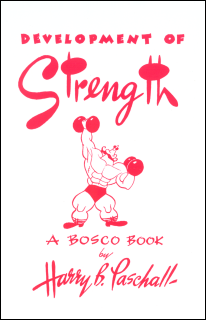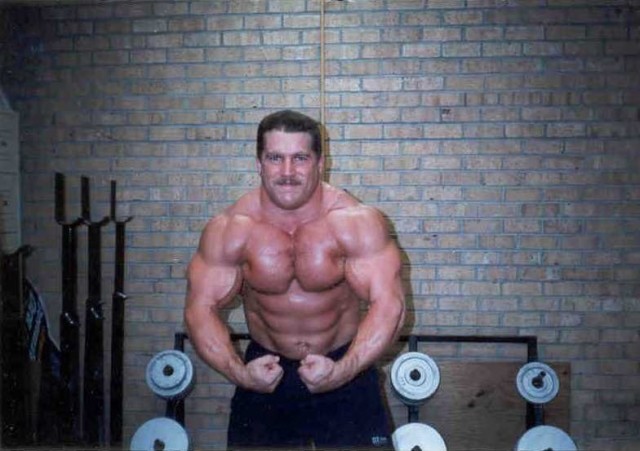The Unheralded Genius of John Bosley Ziegler, MD
By Jan Dellinger (2017)
Understand straightaway that the mission of this article is to publicly rectify the grievous injustice to the lasting legacy and good name of Dr. John Ziegler by calling attention to the overwhelmingly positive contributions the man made to medicine and society at-large. In other words, facts about the doctor which have never seen the light of day "on the record" thanks to what appears to be a chronic conspiratorial effort to conceal this side of him on the part of mainstream media outlets, the "sporting"press in general, and all manner of shock-jock commentators, in and out of the ether, who chase after loud controversial headlines solely to garner ratings and "followers" in the truest sense of the word.
Sadly, 34 years after his passing, a Goggle search of this fine medical man produces two pieces of information: a very cursory recitation of his actual medical training, and the single overshadowing summation of his professional achievement--his connection to the steroid Dianabol and its introduction into athletics. Of course, the picture portrayed is one of professional disgrace and disrespect. And to reiterate, perpetrated by "journalists" and "reporters"either too lazy or too invested in a one-dimensional agenda to even attempt to provide anything resembling balance and context to their crusade against John Ziegler.
And to put a fine point on the opinion expressed above, after much research on my part, I was only able to find TWO articles in any source which had a broadly positive and comprehensive take on Dr. Ziegler. The first was in the October, 1965 issue of Strength & Health magazine, and was authored by then-staff writer Terry Todd. Frankly, if one cares to peruse a more fully rounded view of all facets of Dr. Ziegler, this piece would be enlightening reading.
The other laudatory piece concerning Dr. Ziegler was authored by another York Barbell employee and competitive lifter, the late Bill Starr. I apologize for not being able to offer the precise issue of Ironmind's "Milo" in which this piece appeared, but seemingly it was published just before or just after the turn of the century. Clearly, Starr had immense respect for Dr. Ziegler, labeling him a "pure scientist" and "humanitarian" while touting his mind-boggling inventiveness, scientific curiosity, powers of observation and creativity as they were applied to a wide range of life, including strength training. Considering Starr's esteemed reputation as a former lifter, writer and commentator, need I say that his feature on Ziegler should be required reading, if for no other reason than the sake of Iron Game history and to yield truthful balance.
Let's be clear here, no one is denying Dr. Ziegler's association with Dianabol, or his subsequent disavowal of it, but what we will demonstrate herein is that the man was about much more than performance enhancing pharmaceuticals. Specific concentration will be spent on Bill Starr's Ziegler assessments of "pure scientist" and "humanitarian"...and how he combined the two objectives.
Oh, by the way, in the event you are confused by my usage of the pronoun "we" in the preceding paragraph, while my name is on the byline of this article, readers should also understand that it is very much a joint effort made possible by the thoughts, impressions, interaction and contributions passed along by Bill March, Bill Starr, Dick Smith and Bill St. John, the former bodybuilder. In fact, massive amounts of this feature were made possible by St. John's enduring affinity for Dr. Ziegler and his work.
Referring back to Starr's Milo article on Ziegler in which he roundly praised the doctor's boundless fertile mind as it pertained to medical science, considerable ink was devoted to his creation and progressive refinement of the Isotron, which by all standards, represented the capstone of his innovations. What is the Isotron? For lack of a better general description, it is (yes, it is still around!) an electronic muscle stimulator (EMS). Of course, a TENS unit also meets that criteria, so recognize that calibrate and grade matter in terms of performance. Suffice it to say that TENS units, or the typical EMS units in current use, are lesser-grade pea-shooters compared to the Isotron in terms of rehabilitative results. And please do not fall prey to the smug notion that anything made today in the Age of Technology automatically is superior to a device which came to fruition in 1959, which the Isotron did!
Click to Enlarge
So, how did the "Father" of the Isotron explain his creation to other professional entities? In correspondence dated January 19th, 1974 to the Casualty and Surety Division of the Aetna Life and Casualty Company, Dr. Ziegler offered the following, "Treatment by the Isotron involves repetitive, rhythmic and sustaining application of electronic impulses where the intensity of such impulses and the time interval between them varies with the overall condition of the patient and his existing illness, disease or injury. Each of the foregoing elements may be regarded as a separate modality, but since they are used in combination, as the patient's condition and response warrant, no specific type of improvement can generally be attributed to any single element comprising the treatment pattern. However, the single element can be used to indicate and measure patient improvement. Thus, there is a stamp of progress if the patient can accept a greater impulse; if this time between successive impulses can be lessened; if the hold period can be lengthened, etc.
"The primary function of the Isotron is to improve circulation and to increase muscle strength, size and tone. In short, what the deficiencies of the patient prevent him from doing to better his condition, the Isotron (selectively applied)does for him until he progresses to a point where his circulation and muscles become normal or so improved that he can respond to other and more common means of physical therapy."
Ziegler's three-and-half-page letter to Aetna contains some other enlightening snippets. The patient about whom they were conversing was a long-time sufferer of cerebral palsy, and had been under the doctor's therapeutic supervision for more than a year as of that writing. Explaining his course of treatment, Ziegler noted having to correct abnormalities like faulty gait, faulty posture, sense of balance, a lack of overall body control, etc. A portion of his treatment focus was to enhance the neuromuscular connection of specific general areas of the body, as well as the body as a whole.
For instance, improving the neural connection and tone of the shoulders and neck fortified head carriage, and overall sense of balance; arms and hands enabled the patient to break falls which were inevitable with this impairment by increasing his strength and dexterity to grasp object as compensation, or returning to an upright standing position when he did hit the ground. Also, electronic emphasis on his abdomen and lower back provided relief from back and pelvic pain stemming from long weakened and atrophied muscles.
Likewise, the patient originally exhibited serious skin discoloration in his lower extremities, which vanished over time with the enhanced circulation provided by Isotron treatments.
And then there was this clincher: Ziegler pointed out that this patient had been afflicted with cerebral palsy for several decades by that point, during the course of which he had spent vast amounts of time and money, "subjecting himself to every type of treatment, surgery, medication and therapy suggested by members of both the American and foreign medical communities" with no improvement.
"...The patient has stated that the course of action (author's note--the Isotron) now being pursued has resulted in positive and visible improvement in his condition for the first time in several decades." The patient's testimonial also remarked experiencing steadily stronger impulses to his motor nerves, lessened involuntary muscle action and greater muscular control.
In retrospect, there were a couple of other Ziegler remarks in this letter, beyond the patient in question, which rate a mention. For instance, he pointed out to Aetna his level of experience administering Isotron treatments to others, citing his 15 prior years of favorable results using it solely in regard to sports-related therapy involving bodybuilders, weightlifters and injuries sustained by other participants in heavy and lighter kinds of athletics. Yes, this would include subjects from York Barbell and outside lifters--Pickett, March, Suggs, Starr, St. John, Knipp, Gourgott and many others.
However, it is my intent to confine this article to the Isotron's priority application in Ziegler's opinion, medical rehabilitation. Plans for a second Ziegler feature focusing on the athletic application of the Isotron are already floating around in "our" heads.
Perhaps it would be prudent to step back and establish Dr. Ziegler's path to this penetrating medical focus. Prior to opening up his practice in Olney, MD in 1954, part of his extensive medical training included a two year residency in neurological medicine at Tulane University. This particular medical specialty centers on the diagnosis and treatment ( surgical and nonsurgical) of over 600 diseases, conditions and disorders involving the central and peripheral nervous systems, including the coverings, blood vessels and "effector" tissues (muscles).
A subset of neurology is neuromuscular medicine, which junctures at the cross roads of other specialties involving physical medicine and rehabilitation. Some of the more notorious and potentially catastrophic maladies in this category would be ALS, Multiple Sclerosis and Muscular Dystrophy or similar conditions which devastate the function of the brain and spinal cord. The aim of treatment for those afflicted with the aforementioned is to broadly reduce symptoms, provide as much improvement or relief as possible and optimize quality of life. So, the former Marine, who had some personal experience with a broken body, brought his considerable talents and tenacity to bear on these progressively debilitating scourges plaguing mankind.
Additionally, focusing on the rejuvenation of handicapped, seriously injured and structurally or biochemically impaired persons was also a good career move for Ziegler when he began practicing as outbreaks of poliomyelitis--also known as infantile paralysis--were happening worldwide. Typically, this infectious disease attacked the legs, head, neck and diaphragm muscles, frequently resulting in paralysis, which could be either temporary or permanent. And even among those in whom the symptoms abated in their youth, there was also a substantial risk that symptoms would return with a vengeance between the ages of 35-60. This condition was referred to as post-polio syndrome. Characteristically, sufferers experienced extreme muscular weakness, pain and fatigue, which slowly and progressively worsened until "treatment" was coping with the decline in the form of leg braces and power wheelchairs.
The medical community responded by researching a variety of avenues. Folks like Jonas Salk went the vaccine route, and thankfully were successful, while others like Ziegler took a different tact in dealing with these kinds of problems. So, he took wing initially with a galvanic stimulator--muscle stimulation via electricity predates Dr. Ziegler-- and a dry cell battery, and within five years after opening his practice, through trial and error, he had developed a productive, operational and effective model of the Isotron. And, much like Salk he was getting positive results in many, many cases, so much so that Dr. Ziegler and his device were drawing a great deal of positive word-of-mouth among his peers and beyond.
Before continuing on with superlatives, understand that of the legions of patients with neuromuscular difficulties who were treated by Dr. Ziegler, miraculous results did not extend totally across-the-board, meaning that there were some who received little or no benefit from treatments with the Isotron. Seemingly, there is a point-of-no-return where nerves and muscles have been atrophied and damaged for too long to have any hope of the slightest rehabilitation.
The good news was that of those legions of severe cases Ziegler treated, his "batting average" in terms of acquiring encouraging to near-miraculous results was so astounding, that he and his Isotron got noticed in quarters large and small. Based on the "suitcase" full of laudatory correspondence to Ziegler which St. John made available for this article, the Isotron's heyday was between roughly 1961 and the mid-1970s. Frankly, there are w-a-y too many glowing testimonials from patients, referring physicians and other sources to print in totality.
However, there are a few specific individuals and cases from back then I will take the trouble to spotlight. Supporting Bill Starr's contention that Ziegler was a humanitarian, as well as the epitome of a pure scientist, the good doctor's talents and medical expertise were routinely made available to ordinary folks of extremely limited means when it came to paying for services rendered. Then again, compensation can come in many forms. Dr. Ziegler's long-time gardener/handy fix-it man did not start out as such. Actually, he had been suffering from such severe and chronic lower back pain that surgery had been performed with no reversal of his condition. In fact, it worsened to the point where the man was confined to a wheelchair. So, he came to Dr. Ziegler in search of any relief whatsoever.
Gradually and progressively Dr. Ziegler gave this man continuing Isotron treatments, and slowly but surely restored his body in steps until he no longer needed the wheelchair, could stand and move about in a fully functioning manner. Overjoyed at his unbelievable rejuvenation, the man humbly admitted that he could not begin to remunerate Ziegler (a fact Doc already knew) for his healing. Not wishing to deplete his esteem, Ziegler suggested that the man repay him by cutting his grass, painting and doing other odd jobs around the Ziegler residence. Per Starr, this was not uncommon for Ziegler.
Predictably, the news of Ziegler's pioneering results-producing therapy reached the elites of the region. Unequivocally, Dr. Ziegler's highest profile patient was President John F. Kennedy. Yes, you read that right! The back miseries of the 35th President of the United States were well documented. Ziegler and his Isotron were part of the medical team which sought to lessen President Kennedy's pain on a regular basis.
This reveal begs a couple of ancillary but noteworthy points. The first, Dr. Ziegler developed a suitcase model of the Isotron which went with him to the White House when he attended to President Kennedy.
Secondarily, but not insignificantly, from time to time, part of the media "character assassination" of Dr. Ziegler included the implied insinuation he was a kooky practitioner of bizarre science. EVERYBODY knows that visitors to the White House, and even more so those who have direct contact with the sitting president, are SCRUTINIZED stringently. Hence, a copy of Ziegler's White House security clearance on W.R. Grace letterhead is provided to put that scurrilous insinuation to rest.
Click to Enlarge
Oh, and what better testimonial to the safety and potential effectiveness of the Isotron than the fact that it was employed as a therapy for POTUS!
SIDEBAR NOTE: Attorney General Robert Kennedy did come to visit Dr. Ziegler at least once. One afternoon,Bill March recalls arriving at Ziegler's for a scheduled Isotron treatment, and almost immediately upon entering the doctor's home encountered the Secret Service, Attorney General Kennedy and a few very top-level military commanders. Quick pleasantries were exchanged, and then Bill prepared for his Isotron workout.
And while on the matter of anecdotal points of historical interest, recognize that aside from Dr. Ziegler himself, there were only two other individuals he felt possessed the required knowledge and understanding regarding all aspects of the Isotron to qualify as competent "operators" and administer treatments to other individuals. Those two Ziegler students were York Barbell's Dick Smith and Bill St. John.
Fortunately, the Isotron has been neither moth-balled or sent to the scrap heap since Ziegler's passing in 1983 as St. John has functioned as the gatekeeper of this ingenius device. Quietly, he has from time to time, continued in Ziegler's footsteps of providing relief from pain and restoration/maintenance of physical function gratis to a very small group of sufferers who have come his way. Characteristically, these folks are beset by lasting injuries or conditions so insidious that a standard prognosis would have had them in a wheelchair long ago.
Looking at two cases-in-point who vociferously declare that the only thing keeping them out of a wheelchair is continued access to the Isotron. One of whom is a decorated Marine veteran (Navy Cross) of the Vietnam War named Rich Gresko. On March 11, 1970, Lance Corporal Gresko and his men became involved in a night ambush, during which he literally threw his body on an exploding enemy grenade and lived...although horribly wounded as one would expect.
Incidentally, for readers who admire accounts of heroism while under fire in combat, check out Leathernecks. com to fathom the full measure of Rich's bravery. Bottom line, despite taking the brunt of the grenade's percussion and shrapnel throughout his body, Gresko had enough presence of mind to keep firing his M-14 rifle while resolutely crawling around and directing his men to the relative safety of the camp perimeter. Talk about a legitimately tough guy...then and now! Note, too that this was the second time within the space of a month that Rich had been wounded in combat.
Of course, absorbing the full effects of a grenade detonation devastates the human body, as Rich sustained grievous injuries to his chest, abdomen, right shoulder, neck and legs. In point of fact, the razor sharp fragments of the grenade had so ripped his body from waist to ankles that his left leg was nearly severed by the blast. Of course, at the first stop of what would prove to be an endless tour of medical facilities and veterans hospitals, doctors, figuring it was beyond being useful, wanted to amputate it, but Rich talked them out of it.
Needless to say, countless surgeries and medical procedures followed for years thereafter, and the unimaginable scarring of his legs and abdomen are only the visible signs of what Rich has had to endure. And, yes, there is the considerable residual physical pain and mental anguish which are constant companions. This modest, genial former Marine even differentiates the pain into "good" and "bad" categories. It is in this latter area where Rich feels the Isotron exerts its greatest influence in his particular case. Naturally, as one ages, the chronic nature of injuries like Rich's only worsen. In fact, in 1990, he was forced to discontinue his occupation as a construction boilermaker due to the lasting complications.
However, thanks to fairly regular St. John-administered treatment with the Isotron, he is able to walk and do some of the odd jobs around his house, and engage in pool exercises as a supplement. More specifically, he feels the Isotron treatments stimulate the inner workings of multiple muscle groups and nerves which feed them simultaneously to accomplish the degree of rejuvenation he currently enjoys. Per Rich, this improved degree of rejuvenation in terms of increased mobility and sense of strength--along with the critically relevant lessening of physical pain--lasts for eight to nine days after a single treatment! Understandably, Rich feels a tremendous debt of gratitude to Bill, as well as to the profound thinking former Marine, Dr. John Ziegler, who developed the therapeutic godsend.
Of course, wives always have a good grasp of most situations, and Rich's Katey is no exception as exemplified in a few off-the- cuff remarks she made about Isotron therapy, and especially as it applied to Rich's situation. In her view there is nothing frightening or outlandish about electric muscle stimulation, or as she put it, "electricity is natural." She went on to remark, and she should know more so than anyone else as she spends more time with him, Rich has experienced clear improvement in terms of mobility and nerve reaction.
Moving onto another individual who readily admits that semi-regular to intermittent treatments on the Isotron have allowed her to cope in a significant way with a multiple sclerosis diagnosis--meaning she is convinced they have kept her out of a wheelchair. Incidentally, this lady lives in very close proximity to Bill St. John. I'm referring specifically to his wife, Rita Doughty St. John!
Rita was diagnosed with multiple sclerosis at the age of 41 when her neurologist began the standard course of action, gradually preparing her for the wheelchair at some point down the road. However, at age 43 she met Bill and the Isotron. For virtually the entire following year, twice weekly treatments on the machine allowed her to resume normal activities, including aerobics in the form of daily six or seven-mile walks.
After that year of twice weekly Isotron sessions, Rita returned to her neurologist who marveled at her mobility, asking, " Aren't you on a cane? I thought you'd be in a wheelchair by now." And Rita readily acknowledged that if it hadn't been for the Isotron, by now, after 20 years of living with MS, her hands would be clawed and she'd be unable to stand or walk, much less pursue her current aerobic passion, spin bike classes.
Life-altering symptoms of this affliction also intrude in other less obvious ways. Periodic "fog" sprees regarding the brain, as well as one's available energy level, are also quite common among MS sufferers. In regard to fatigue, periods of extreme bone-tiredness are experienced, even though one had done nothing physical. Likewise, a state of unexplained disorientation or confusion can also occur. Rita has managed to generally sidestep these ravages as well thanks to the Isotron.
Sure, there is a limited amount of pain that comes and goes, but if she thinks her symptoms are beginning to flare, a couple of Isotron treatments have so far kept them at bay. According to Rita, the secret is to head them off at their first appearance. In fact, in recent times, she has seldom required any treatments. Small wonder that Rita contends that Isotron treatments are, "The best thing I ever did. It is capable of helping so many people."
"Sounds too good to be true," is what I'd bet a lot of readers are thinking by now. I'm also sure this thought has likewise popped into the minds of most readers: Assuming I am not aggrandizing the capabilities of the Isotron, why has this marvelously hope-inspiring device in the on-going medical struggle against crippling diseases and conditions remained in obscurity?
Per St. John, Dr. Ziegler was extremely (and justifiably) cautious when it came to sharing, much less turning over the rights to proprietary information about the Isotron with outside commercial interests. And there was no shortage of substantial interests and offers. However, the good doctor was insistent that his creation be used for its intended purpose--rehabilitation of the seriously injured and afflicted from all socio-economic stratas. Despite being shown astronomical sums from a few high visibility sources, none gained Ziegler's trust sufficiently to abandon his high ethical standard.
Actually, a September,1966 Idaho plane crash might have scuttled the most viable opportunity for the Isotron to have been embraced medically in conformance with Ziegler's vision. Two of the men who were killed on this ill-fated flight--which was returning from an elk hunting trip--were Dean Markham and George Skakel, Jr., both of which had close ties to Attorney General Robert Kennedy, and possessed considerable interest with regard to making the Isotron more commercially available.
Judging from the extensive paper trail Bill St. John has passed on to me, it's clear that Ziegler and Markham shared a strong personal and professional relationship. The latter was a major A-list contact, being a bona fide "power player" in the Kennedy White House thanks to his close personal friendship with the Attorney General--Harvard buddies, class of 1948, and godfather to Robert and Ethel's eighth child, Christopher George, among other ties.
In 1961, Markham was brought into the upper echelons of the Kennedy White House, officially denoted as a "Special Projects Director". Because he earned degrees in social psychology and possessed a bit of a background in police work, Markham directed, advised, consulted, organized and oversaw umpteen committees, councils, commissions, panels, and government out-reaches focusing on youth and narcotics (the popular word for illicit street "drugs" at the time), delinquency and related areas. Culturally, the "war on drugs" hit full stride in the Kennedy years.
Beyond this, Markham also worked with the Justice Department, Treasury, Health, Education & Welfare and the Budget Bureau. But there is no doubt, he was tightly connected with the inner White House circle, and not coincidentally, all of his correspondence with Dr. Ziegler was on White House letterhead.
Similarly, there is no question that Markham was spreading a lot of positive word-of-mouth regarding the Isotron and its benefits/ possibilities among other branches of our government, like the military. Hence, around 1963, Ziegler was receiving exploratory letters of interest from the Department of the Navy, who seemed interested from a therapy standpoint, and the Marines, who expressed interest from a physical readiness standpoint.
In time, the cautious and conservative Dr. Ziegler offered guarded responses, and multiple demonstrations were held with the aforementioned parties. Actually, a couple of the York lifters, and most often Bill St. John, served as the subject for these high profile demonstrations.
Circa 1962-'63, Markham was, in a friendly way, attempting to steer Ziegler in a commercial direction with the Isotron by connecting him with NYC lawyers Tom Hayes and George Skalel, Jr, the latter being Ethel Kennedy's brother. However, in April of '63, the former advised Hayes to shelve "incorporation proceedings for the Isotron Research Corporation of Dr. John Ziegler" as the latter had enlisted a local Olney, MD attorney to spearhead a similar effort. Perhaps this explains the "ISOTRONICS, INC. of Olney, MD" reference in one of the military correspondences to Ziegler.
Of course, the very cordial Markham-Ziegler relationship, and its insider influence dimension, went away with that Idaho plane crash in 1966. However, by that point, Ziegler's Isotron had a "life" of its own, albeit an "underground" one. Which could explain why, according to Ziegler's correspondence, government interest in it seemed to register a bit of a rekindling again in 1973-'74, with overtures coming from the Veterans' Administration.
Additionally, on the trademark registration front, it seemed Ziegler was also more proactive in that time frame, but only to a point. A February, 1974 letter to Ziegler from Virginia Beach physician Dr. Robert Brewer, references the "Isotron Mark VIII". Per Bill St. John, this designation is indicative of an advanced version from a prior generation of the unit. Over the years, Ziegler sought to reflect on his creation and make refinements when he felt upgrading was prudent.
So, what hybrid feature or technological uniqueness from the mind of Dr. Ziegler allowed the Isotron to gain what some would view as a near-panacea reputation? Only Ziegler knew for sure. However, the "best guess" of former Olympic lifter-bodybuilder, eye surgeon and accomplished critical thinker in his own right, the late Dr. John Gourgott, is that Ziegler had arrived at the perfect signal output and/or wave form. What does that mean? Only Gourgott knew!
This exhaustive historical look at the Isotron only centers on one dimension of its past, the medical application. Recall that Dr. Ziegler stated in his aforementioned letter to Aetna Casualty that he also had quite a backlog of experience with its athletic applications as well. We'll explore that in a future article, along with the Doctor's thoughts on pure strength training and advanced bodybuilding training.
